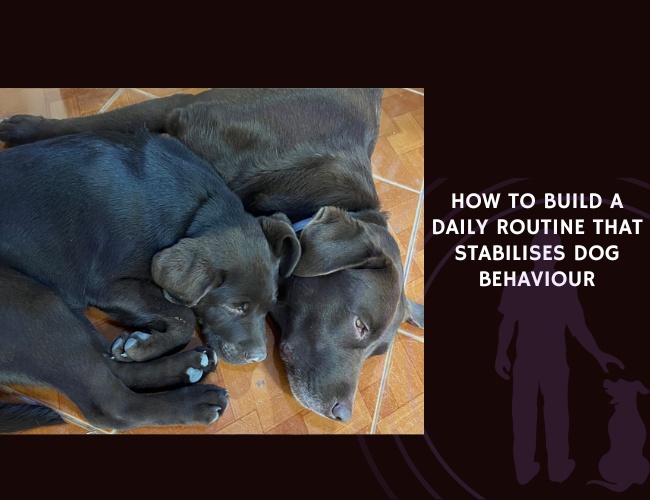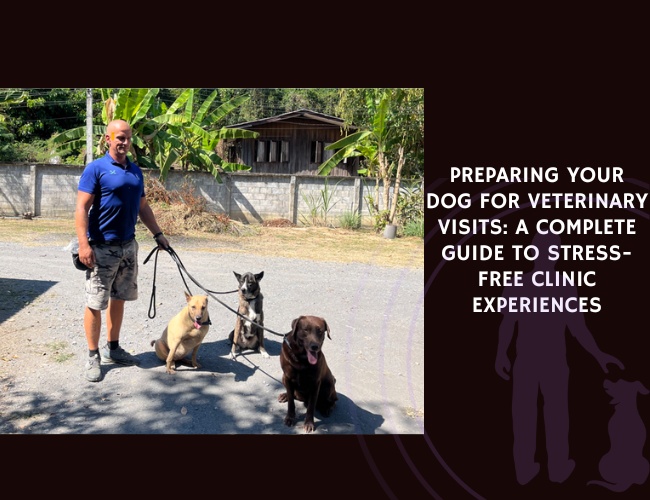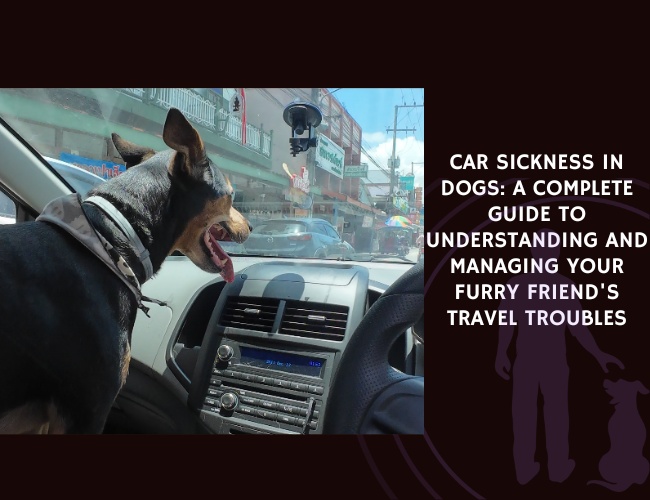Introduction to Canine Trauma
What Is Trauma in Dogs?
Trauma in dogs refers to experiences that cause deep, lasting stress. This can include a frightening event, painful injury, loss, or an unstable environment. Trauma affects a dog’s body, brain, and behavior. It is important because these effects can last for months or even years, shaping how a dog acts and feels each day.
The Multifaceted Nature of Trauma
Trauma in dogs is not just about “bad memories.” It’s a complex problem with three main dimensions:
- Neurological: Trauma can change how a dog’s brain works. For example, the amygdala (the part of the brain involved in fear) may become extra sensitive. This means a dog might overreact to normal sounds or sights. Problems with how the body controls stress hormones, like cortisol, can also happen. These changes create lingering worry and anxiety.
- Behavioral: Dogs may show trauma through behaviors like hypervigilance (always being on alert), freezing in place, avoiding people, or acting aggressively. In some cases, they might also start to act out with behaviors such as non-stop pacing or chasing their tail. Some dogs forget commands or basic rules, like toilet training, when under stress.
- Environmental: The world around a dog matters. A noisy, unpredictable, or stressful home can make trauma worse. Supportive, calm spaces can help heal it.
Why Understanding Trauma Matters
Being informed and professional about how trauma works in dogs benefits everyone. For owners, recognizing the signs allows them to support their pets with compassion and patience. For veterinary professionals, a deeper understanding leads to better diagnosis, informed care, and stronger bonds with both animals and people.
Trauma in dogs is a serious topic, but with the right knowledge, anyone can help a dog move forward in a supportive way.
Next, we’ll dig deeper into how trauma changes a dog’s brain and stress systems, setting the stage for healing and recovery.
Neurological Foundations of Trauma
The Canine Brain Under Stress
Trauma changes the lives of dogs in profound ways, often starting with changes in the brain. One of the key areas affected is the amygdala, a region that helps process fear and stress. In traumatized dogs, the amygdala sometimes becomes extra sensitive—a state called “amygdala hypersensitivity.” This means dogs can react with intense fear, even in situations that others consider normal. Their brains get “stuck” in survival mode, making recovery challenging and daily life stressful.
Trauma also disrupts cortisol regulation. Cortisol is a hormone that helps the body handle stress. Normally, when the stress is over, the brain tells the body to stop making cortisol. But after trauma, this feedback system can break down, and dogs may keep producing too much cortisol. This leads to ongoing anxiety and difficulty calming down—making everyday routines hard for both the dog and the caregiver.
Lessons from Early-Life Stress in Animals
Much of what we know about trauma in dogs comes from early-life stress (ELS) studies in rodents. When young animals are separated from their mothers or experience neglect, scientists have observed changes in important brain regions—the amygdala and hippocampus. These changes make it harder for animals to regulate stress and learn from new experiences, just like many traumatized dogs. Although direct studies in dogs are limited, researchers agree that similar changes likely happen after canine trauma as well.
Brain Regions Involved: Amygdala and Hippocampus
The amygdala is at the heart of the brain’s fear response, while the hippocampus helps process memories. Trauma can make the amygdala overly alert and shrink or disrupt the hippocampus. This combination makes dogs more likely to remember traumatic events and react strongly to triggers. These changes are long-lasting and can shape behavior for years.
As we explore further, it’s clear that trauma affects not just a dog’s emotions but also their entire body, influencing everything from heart rate to hormone levels.
Physiological Markers of Trauma
Understanding Physical Signs of Trauma
Trauma in dogs isn’t just about what we see in their behavior—it leaves marks in their bodies, too. One of the main changes is seen in the hypothalamic-pituitary-adrenal (HPA) axis. The HPA axis controls how dogs react to stress, mainly through the release of the hormone cortisol. When trauma disrupts this system, dogs may show ongoing signs of stress, even when they’re safe.
Key Biomarkers for Canine Trauma
Reliable markers help professionals diagnose trauma. Here are the most informative and professional markers that experts look for:
- Hair cortisol concentration (HCC):
HCC provides a way to check for long-term stress exposure. Since hair grows slowly, cortisol from the body gets trapped there, giving a picture of what the dog’s stress was like over the past months. That makes HCC much less affected by stressful events that happen in just a day or two. - Cortisol in saliva or feces:
Saliva and feces samples can show short-term spikes in cortisol. While not as stable as hair measurements, these tests can reveal recent stressful events and how the dog’s body is coping in the moment. - Heart rate variability (HRV):
HRV measures how much a dog’s heart rate changes over time. Lower HRV is linked to chronic stress. By watching HRV, caregivers get clues about how trauma is still affecting a dog’s nervous system.
Diagnostic Value
Using these physiological measurements is professional and supportive, as it allows veterinary teams to:
- Avoid solely relying on owner observation or interpretation
- Track progress over time during treatment
- Build a more complete health profile for each dog
These biomarkers create a clearer, more supportive path for understanding and helping each unique dog.
By connecting these physical signals with what is seen in behavior, veterinary professionals and dog owners are better equipped to create tailored care plans and supportive environments for their canine companions.

Early-Life Adversity and Neural Development
Impact of Early Separation and Neglect
Informative studies reveal that puppies separated too early from their mothers or left without proper care face real challenges. These puppies miss out on vital social learning and comfort. Early neglect or separation can stress a young dog’s brain, making it harder for them to cope with new situations later. This adversity often disrupts the natural development of their stress response systems, putting them at risk for long-term emotional and behavioral troubles.
Changes in Brain Cells and Communication
Professional research, especially from rodent models, shows that early-life stress changes how brain cells, or neurons, grow and connect. When puppies don’t get the warmth and touch they need, parts of their brains—like the amygdala and hippocampus—may not develop normally. These brain areas control emotions and memory. Stress in early life can cause neurons to shrink and weaken, resulting in poor synaptic transmission. The communication between brain cells suffers, leading to lower resilience against stress as the dog grows up. While most details are from rodent studies, experts believe the same patterns appear in dogs as well.
Long-Term Effects of Early Trauma
Supportive evidence points to lifelong consequences for dogs who experience trauma young. These dogs may become more anxious, react quickly to threats, or struggle to calm down after stressful events. Changes in their stress hormone systems, especially cortisol regulation, can last for years, making recovery harder. Anxieties or behavioral issues from puppyhood might follow dogs into adulthood, even affecting training and relationships with people or other animals.
Understanding this chapter highlights why early nurturing and gentle socialization are essential for every puppy’s healthy start in life.
Behavioral Expressions of Trauma
Understanding Trauma-Related Behaviors
When dogs go through traumatic experiences, their behavior can change dramatically. These changes often surface as warning signs for owners and professionals. Some common trauma-related behaviors seen in dogs include hypervigilance, avoidance, freezing, and aggression. Hypervigilance shows up as constant alertness and startle responses, while avoidance is seen when dogs shy away from people, places, or situations reminding them of their trauma. Freezing—staying completely still for an extended time—is another sign. Aggression, sometimes unexpected, may happen as a defensive response.
Some dogs also develop compulsive actions. These can include repetitive behaviors such as pacing or tail-chasing. Compulsive patterns may offer anxious dogs a sense of control or release, even if only momentary. Regression is another key sign. House-trained dogs may suddenly have accidents indoors, or previously well-trained dogs may stop responding to commands. These shifts often reflect the overwhelming stress trauma has caused.
Differences Based on Temperament and Experience
No two dogs are the same when it comes to trauma. The way trauma appears can vary greatly depending on the dog’s personality, breed, age, and past experiences. A naturally shy dog may show more avoidance or freezing, while a confident one may react with aggression or heightened alertness. Environmental factors—like a supportive household, routine, or regular social enrichment—play a big role in how dogs cope and express trauma.
Breed also matters. Some breeds may be more prone to anxiety behaviors or compulsions due to their genetics. These differences make it important for owners and professionals to take an individualized approach, watching carefully for unique patterns in each dog.
Understanding these behavioral expressions is essential for supportive diagnosis and compassionate care, laying the foundation for effective treatment and recovery.
Individual and Breed Differences in Trauma Response
Genetic Influences on Trauma Responses
Dogs are as unique as their human companions! Each dog’s genetic makeup plays an important role in how they react to trauma. Some dogs are naturally more sensitive or resilient due to their genes. Even puppies from the same litter can show different responses to stress or frightening events. This genetic diversity means that some pups may bounce back quickly, while others need extra care to recover when faced with scary or stressful situations.
Breed-Specific Predispositions
Did you know certain breeds are more likely to display specific behaviors when they feel threatened? For example, herding breeds like border collies might become more controlling or vigilant, while toy breeds may show signs of nervousness. Breed tendencies affect how trauma is shown. A breed predisposed to guarding might react with aggression or avoidance, while a more social breed could withdraw or hide. These inherited traits interact with traumatic events, shaping each dog’s unique emotional journey.
Environmental Factors in Trauma Expression
A dog’s environment has a big impact too. Supportive homes with routines, gentle handling, and safe places help dogs recover better from difficult experiences. On the other hand, environments that are unpredictable, stressful, or lacking enrichment can make trauma symptoms worse. Social support, such as positive interactions with humans and other pets, can greatly change the outcome for a traumatized dog. Every dog deserves a space where they feel secure and understood!
Understanding these individual and breed differences helps professionals and pet owners develop compassionate, personalized care for every dog. With the right support, pups can get back on the path to feeling safe and supported.
Trauma. Memory. Healing.
Trauma doesn’t end when the moment passes—it lives in the body, in the brain, in behaviour.
Dogs who carry trauma may flinch at kindness, freeze at routine, or fear the very hands trying to help them. These are not “bad dogs.” These are dogs doing their best to survive a world that once hurt them.
Understanding trauma means learning a new language—one written in cortisol, memory circuits, and trust.
It means seeing behind the bark, beneath the stillness, into the invisible scars that shape daily life. The brain is not broken—it is adaptive. And that’s where healing begins.



You can’t train away trauma—but you can build trust.
Through safe spaces, gentle routines, and science-backed methods, we help dogs feel again. Heal again. Trust again. This isn’t just behaviour work—it’s recovery.
Diagnosis and Assessment Tools
Key Methods for Understanding Trauma
Diagnosing trauma in dogs is a thoughtful mix of science and experience. Since no single test exists, professionals rely on a combination of approaches that together create a clearer picture. Three main tools are used: owner reports, behavioral observations, and physiological measures.
- Owner Reports: Owners can spot changes in their dog’s behavior at home, such as hiding, aggression, or withdrawal. Their observations are essential, but these reports may sometimes be colored by emotions or misunderstandings. Owners can miss subtle cues or mistake normal dog behavior for something worrying.
- Behavioral Observations: Professionals and experienced trainers observe the dog directly, both in daily life and during specific exercises. This helps reveal trauma indicators like freezing, compulsive pacing, or sudden fear reactions.
- Physiological Measures: Science has made it possible to measure trauma by looking at the dog’s body. Heart rate variability and cortisol (a stress hormone) levels in hair, saliva, or feces can show how much stress the dog is facing over time. These give objective snapshots that complement what owners and vets see.
Limitations and the Value of Objectivity
While owner stories are valuable and often heartfelt, they aren’t always reliable. That’s why bringing in data from observations and physiological markers is so important. Blending all three—owner insights, careful observation, and scientific testing—leads to more accurate diagnoses and better care for our canine friends.
Research teams are working hard to develop better, more sensitive ways to spot canine trauma. Future advancements will likely bring new tests that measure stress markers even more precisely or spot subtle behavioral changes earlier. This supportive, professional progress means every dog can get the help they need.
This steady improvement in assessment lays the foundation for compassionate, effective treatment strategies.
Effective Treatment Approaches
Welcome to our informative and supportive section on addressing trauma in dogs. Recovery from trauma calls for a kind, multi-modal approach that focuses on both the dog’s emotional and physical needs. Every dog is unique, so flexibility and empathy are key.
Multi-Modal Strategies for Recovery
A professional and well-rounded treatment plan often combines several techniques:
- Desensitization and Counter-Conditioning:
These two methods help dogs face their fears safely. Desensitization involves exposing a dog to a scary trigger at a very low intensity, slowly increasing the challenge as the dog grows more comfortable. Counter-conditioning pairs the trigger with something positive, like treats or praise, helping to change the dog’s emotional response over time. This approach gently builds new, positive associations. - Environmental Enrichment and Routines:
Dogs thrive on predictability and stimulation. Providing safe spaces, interactive toys, and regular exercise supports healthy behavior and helps reduce anxiety. Predictable daily routines make the world feel more secure.

Building Secure Attachments
Attachment-based behavioral interventions are increasingly recognized as essential. These approaches aim to create trust and a strong bond between the dog and its human. Activities such as gentle play, consistent training, and positive reinforcement help dogs feel safe and understood. Human empathy and soothing touch can lower stress, reinforce connection, and support emotional healing.
Role of Medication and Supplements
Sometimes, anxiety and fear are so intense that extra help is needed. Under veterinary guidance, anxiolytic medication or natural supplements may be recommended. These can relieve distress, making it easier for dogs to engage in behavioral therapy and daily activities. It’s informative and professional to always seek advice from a veterinarian before introducing any medication.
Dogs recovering from trauma benefit most when their caregivers remain patient, supportive, and compassionate. This sets the foundation for deeper healing and lasting behavioral change.
The Human-Canine Bond in Trauma Recovery
The Power of Human Empathy and Connection
When a dog faces trauma, a secure, compassionate relationship with its human can make all the difference. Empathy is more than feelings—it’s showing your dog that you understand its fears and offering calm reassurance. Gentle touch is powerful, too. Simple acts like petting, sitting close, or calm talking can help lower stress by making your dog feel safe and cared for. Social bonding helps traumatized dogs learn that they can trust again, gently easing them back toward positive human interaction. This supportive approach is truly Informative, Professional, and Supportive.
Building Safety and Predictability
Consistency is key for dogs recovering from trauma. Creating a stable environment—where routines are predictable—helps dogs anticipate what will happen next. This might mean:
- Feeding meals at the same time every day
- Using the same walk routes
- Limiting surprises and loud noises
A safe space, such as a cozy bed or a quiet room, gives your dog a reliable retreat. These choices foster trust and reduce anxiety, supporting the healing journey in a calm and manageable way.
Trauma-Informed Care and Recovery
A trauma-informed approach means always being aware of a dog’s sensitivity and potential triggers. Move slowly, respect your dog’s personal space, and avoid overwhelming situations. If your dog is fearful, don’t force interactions or discipline harshly. Instead, use praise and rewards for small progress. This approach reduces the risk of re-traumatization and reinforces the sense of safety.
Promoting healing is a team effort—owners, veterinarians, and trainers should work together, always putting the dog’s emotional needs first. A foundation of understanding, patience, and kindness is essential for trauma recovery.
A thoughtful and supportive bond will empower your dog to gradually rebuild trust and confidence, setting the stage for lasting positive change.
Future Directions in Canine Trauma Research
Advancing Diagnostic Tools
Current canine trauma assessment relies on combining owner observations, behavioral assessments, and physiological data. Although useful, these tools can lack objectivity. Owner-reported symptoms sometimes reflect personal bias, making outcomes less reliable. Developing more refined, objective diagnostic methods is a pressing need. Future research aims to create specific tests for canine trauma—such as validated biomarkers in saliva or hair, and consistent heart rate tracking. These advancements would make diagnosis more accurate, help monitor treatment progress, and reduce confusion caused by overlapping symptoms from other conditions.
Improving Therapies for Trauma
Treatment for traumatized dogs often combines behavior therapy, environmental changes, and, at times, medication. Yet, no single approach works for all dogs. The next step is to tailor therapies for each dog, considering their unique history and needs. Scientists are investigating better ways to combine desensitization and counter-conditioning with enriched environments. Continued research focuses on understanding which interventions are most effective for specific trauma types or canine personalities. Newer methods may involve using technology to track progress or adjust therapies in real time.
The Power of Multidisciplinary Collaboration
Addressing trauma in dogs calls for teamwork between different professionals. For example, blending the knowledge of veterinarians, behavior experts, and researchers in animal welfare. By sharing data and insights, these teams can develop well-rounded treatments that address both physical and emotional needs. This multidisciplinary approach encourages innovation while ensuring that each dog’s care plan is supportive and effective. Collaboration with experts in human psychology and animal interaction studies can bring fresh ideas to both diagnosis and recovery strategies.
Looking forward, these Informative and Professional advances promise a brighter, more supportive future for dogs affected by trauma.
Conclusion: Supporting Dogs Through Trauma
Key Insights: A Multidimensional Challenge
Understanding trauma in dogs demands an informative, professional, and supportive approach. Trauma affects dogs on multiple levels—neurologically, physiologically, and behaviorally. Changes in the brain, like amygdala hypersensitivity and disrupted cortisol regulation, are just one part. Early-life adversity, such as maternal separation or neglect, can alter neurodevelopment and stress responses, leading to long-term behavioral challenges. Trauma is never one-size-fits-all. Each dog’s response is unique, shaped by genetics, individual temperament, breed traits, and the environment.
Practical Advice for Owners and Caregivers
Supporting a dog through trauma requires patience and consistency. Here are supportive steps to guide you:
- Create a predictable daily routine to help your dog feel safe.
- Use gentle touch and calm voice to build trust—never force interactions.
- Look for behavioral changes. Watch for hypervigilance, regression, or compulsive behaviors.
- Work with veterinary professionals to monitor stress using biomarkers such as hair cortisol or heart rate variability when possible.
- Consider multi-modal therapies, including gradual desensitization and positive reinforcement; medication or supplements might be recommended under veterinary guidance.
Remember, an informative and professional diagnosis relies on more than stories—it takes behavioral observation and sometimes physiological data to understand the full picture.
The Power of Compassion and Persistence
Recovery is a journey, not a sprint. Empathizing with your dog’s experience is crucial. Nurture the human-canine bond through consistent care, gentle socialization, and respect for your dog’s boundaries. Compassion builds confidence, allowing your dog to rediscover joy and safety over time.
Thank you for your dedication to understanding and supporting traumatized dogs. Your patience and compassion truly make a difference. 🐾










